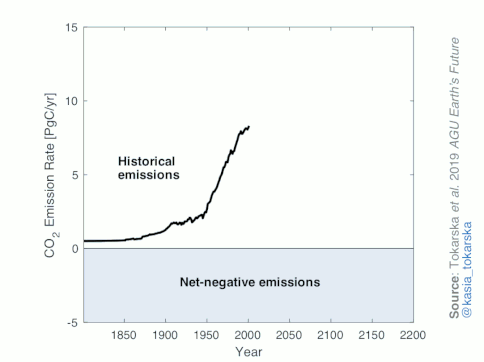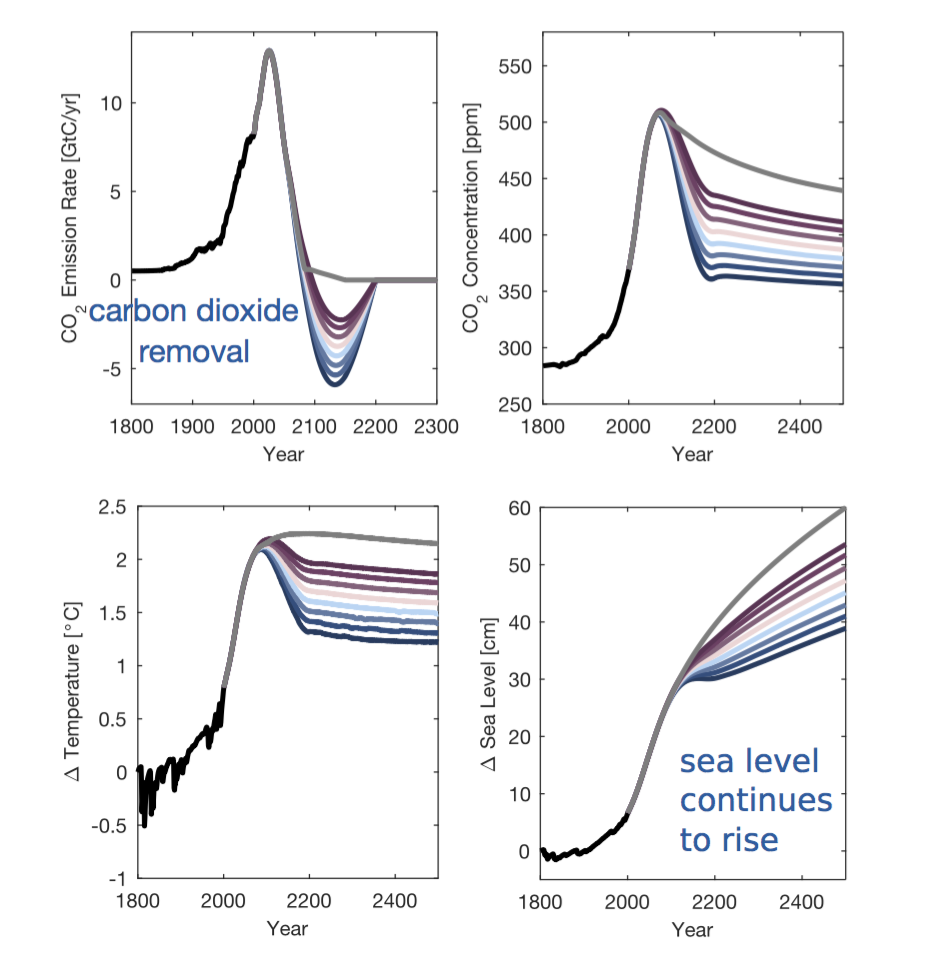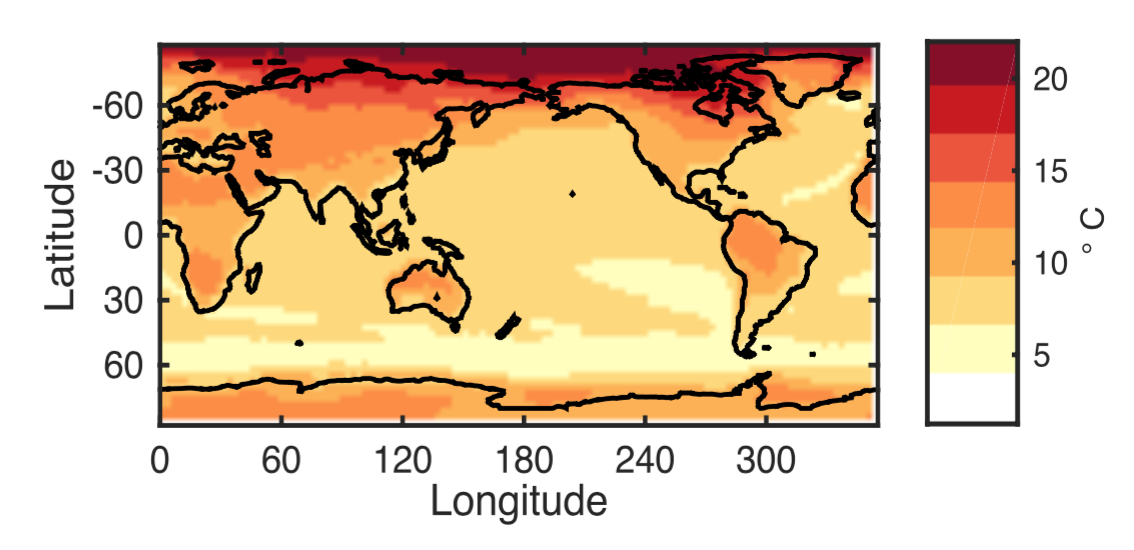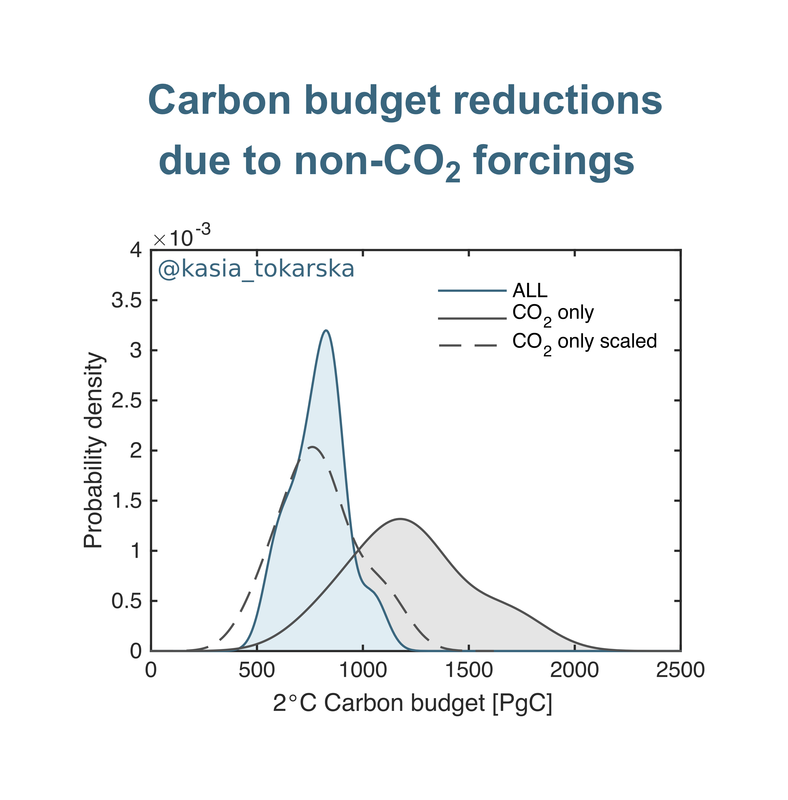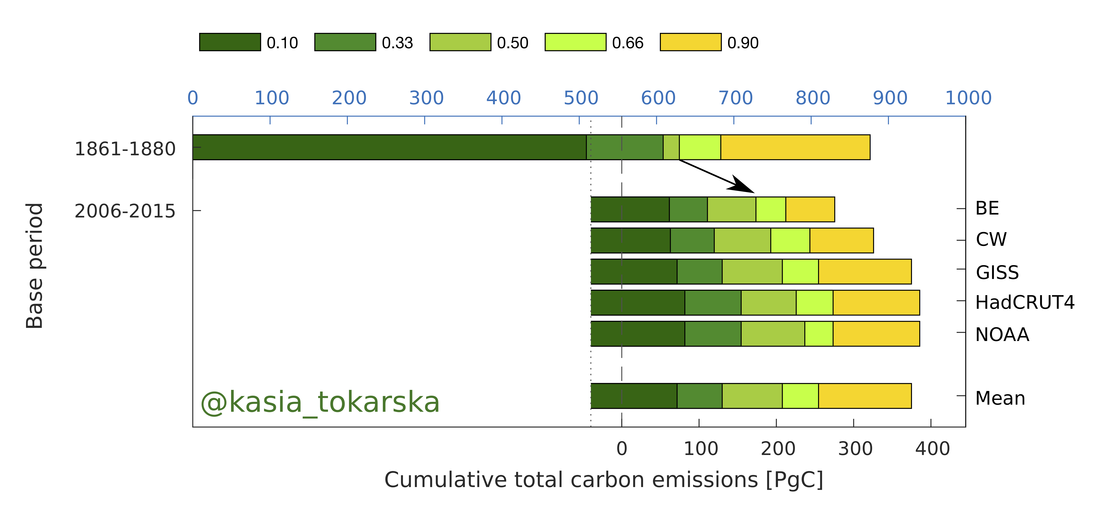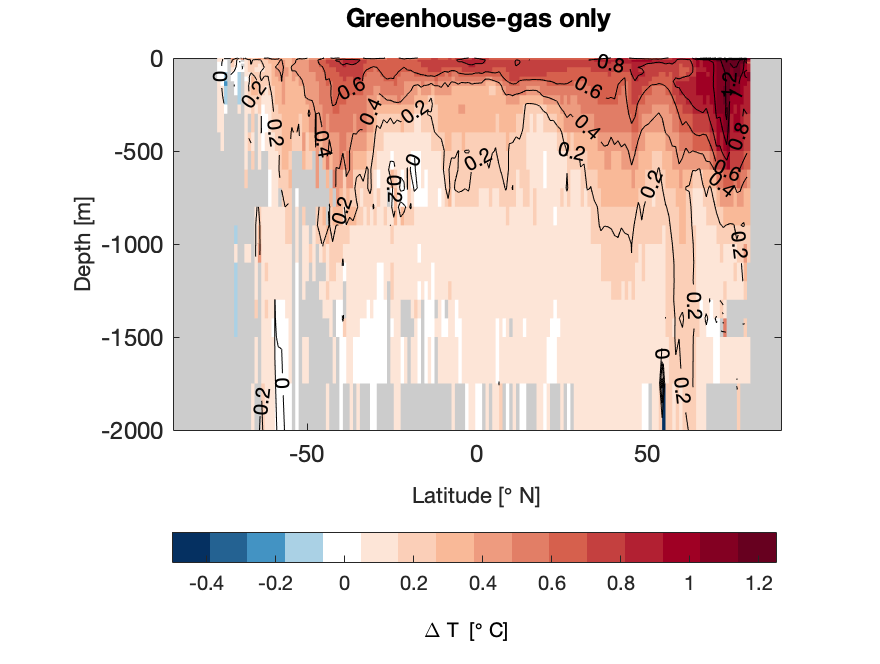Research
|
My research interests focus on exploring interactions among different components of the Earth System, and how they respond to a changing climate under anthropogenic influence. I am particularly interested in climate-carbon interactions, due to their profound implications: they determine how much carbon remains in the atmosphere, ultimately leading to global warming. However, even comprehensive Earth System Models show a wide spread of responses. The overarching goal of my research is to provide more robust projections of future earth’s climate, by running and analyzing output from Earth System Models of different complexity, and reconciling model responses with observations.
In my work, I make use of statistical methods of detection and attribution and observations to distinguish the anthropogenic influence on climate change from natural climate variability. I am also interested in constraining carbon cycle responses to different emission scenarios, mechanisms governing the carbon budgets framework, and its implications for meeting different temperature levels, such as the Paris Agreement target. My current research focuses on bridging the gap between physics-oriented climate scientists and machine learning experts, with the overall aim of providing robust projections of future climate and quantifying different sources of uncertainties, by applying interpretable machine and deep learning machine learning techniques to climate data analysis Interpretable and physically-informed machine learning methods present a promising way forward in linking data-driven statistical and machine learning methods with traditional physical climate sciences, while leveraging from the large amount of data from the observational data products to provide more robust estimates of, often policy relevant, climate metrics. |
Research Highlights
CONSTRAIN special event at the UNFCCC Climate Dialogues 2020 (virtual)
|
A high-level talk on the new generation of climate models, CMIP6, and how they are informing our understanding of future temperature change under different emission trajectories. |
|
Understanding and embracing uncertainties in the remaining carbon budget
for the Paris Agreement target (NCAR CGD Seminar)
|
|
Remaining carbon budgets are subject to different sources of uncertainty, such as the uncertainty in Earth System response to non- CO2 forcing, future non- CO2 scenario uncertainty, and uncertainties due to additional Earth System feedbacks currently under-represented in the Earth System models.
In this talk, I present an integrated approach to quantification of uncertainties in the remaining carbon budgets (both geophysical and socio-economic), using observationally-constrained quantities. I also explain the implications for the remaining carbon budget estimates in the light of the overall uncertainty, while emphasising that despite those uncertainties, the implications remain the same: we need to reach net-zero emissions to stop warming. |
Is strong warming in some CMIP6 climate models likely?
|
Several CMIP6 climate models project stronger future warming and have higher sensitivity (ECS) than previous model generations. We show that most of these models overestimate observed warming. As a result, their higher future warming projections are less likely.
Projected future warming is correlated with the simulated warming trend during recent decades (1981-2014 and 1981-2017) across CMIP5 and CMIP6 models. This correlation allows us to provide observational-constraints on future warming and TCR values. |
|
Are carbon cycle responses reversible after an overshoot?
What happens if we exceed the 2 °C temperature level and return to it later by net-negative emissions (i.e. artificial carbon dioxide removal from the atmosphere)?
How do land and ocean carbon sinks behave in response to net-negative emissions? Are carbon budgets before the overshoot the same as after an overshoot? Here we explore carbon cycle responses and carbon budgets in response to overshoot scenarios, followed by net-negative emissions. |
Can we reverse climate change by removing CO2 from the atmosphere?
Here we explore the role of artificial carbon dioxide removal (negative emissions) in reversing climate change, using an Earth System model of intermediate complexity (UVic ESCM).
We show that while the global mean temperature is reversible on centennial time scales, other components of the climate system, such as sea level rise, are irreversible on human (centennial) timescales, despite the removal of anthropogenic carbon from the atmosphere. We also quantify the efficiency of the carbon dioxide removal, and we show during the net-negative emission phase, the artificial CO2 removal is partially opposed by outgassing from natural carbon sinks. The efficiency of CO2 removal decreases as net-negative emissions increase. |
How much would five trillion tonnes of carbon warm the climate?
In this project, we explore the climate response to a business-as-usual scenario, where total carbon emissions reach five trillion tonnes of carbon (equivalent to a lower bound of fossil fuel resource estimate).
Our results show profound climate change in the absence of further mitigation. Also, the relationship between warming and cumulative carbon emissions continues to be approximately linear, even at such high levels of carbon emitted, implying that the carbon budgets framework is robust at different levels of carbon emissions. Radio Ecoshock ‘Science of extreme climate change’ (Radio interview)
http://www.ecoshock.org/2016/06/science-of-extreme-climate.html Research Gate ‘Temperatures to rise about 8°C by 2300 if emissions are not mitigated, new Nature study finds’ https://www.researchgate.net/blog/post/temperatures-to-rise-about-8-c-by-2300-if-emissions-are-not-mitigated-new-nature-study-finds |
Selected press release: National Geographic ‘Crocodiles and Palm Trees in the Arctic? New Report Suggests Yes.’ http://news.nationalgeographic.com/2016/05/160523-climate-change-study-eight-degrees/ The Guardian ‘World could warm by massive 10°C if all fossil fuels are burned’ https://www.theguardian.com/environment/2016/may/23/world-could-warm-by-massive-10c-if-all-fossil-fuels-are-burned Carbon Brief ‘Arctic could warm by 17°C if all known fossil fuels are burned, study finds’ http://www.carbonbrief.org/arctic-could-warm-by-17c-if-all-known-fossil-fuels-are-burned-study-says |
What is the impact of non-CO2 forcing on carbon budgets?
Carbon budgets for 1.5 °C and 2.0 °C warming are reduced by 257 PgC and 418 PgC, respectively, and the uncertainty ranges on the budgets are reduced by more than a factor of two when accounting for the net warming effects of non-CO2 forcings.
But why should there be less spread in the ALL-forcing budget compared to the CO2-only budget? The net warming response to non-CO2 forcings at the time of threshold exceedance is proportional to the net warming in response to CO2 in each model, resulting in the narrower uncertainty ranges of ALL-forcing budgets. Reductions in carbon budgets due to non-CO2 forcings are mostly due to the direct warming effect, and reductions in carbon uptake are secondary but still important. |
How does changing the reference period affect the remaining carbon budgets?
|
Carbon budgets reported in the Fifth Assessment Report of the Intergovernmental Panel on Climate Change (IPCC, 2013), are directly based on simulations from comprehensive Earth System Models (CMIP5), which, in general, tend to warm more than observations for the current amount of carbon emitted (IPCC, 2013), thereby tending to underestimate carbon budgets consistent with staying below a given level of peak warming.
Here, we calculate remaining carbon budget for the 1.5 °C target, relative to the recent decade base period (rather than the standard 1860-1880 baseline), which shows about 208 PgC remaining, equivalent to about 20 years left of emitting at 2015 rate. |
How much of the ocean warming is due to anthropogenic emissions?
We quantify the anthropogenic and greenhouse-gas contributions to past ocean warming and future sea level rise.
We make use of detection and attribution techniques (regularized optimal fingerprinting) to separate the natural changes contributing to ocean warming from those due to greenhouse gases and anthropogenic aerosols in the historical period. We also look at the greenhouse-gas attributable sea level rise by the end of the century. |
Google Scholar profile
Proudly powered by Weebly
